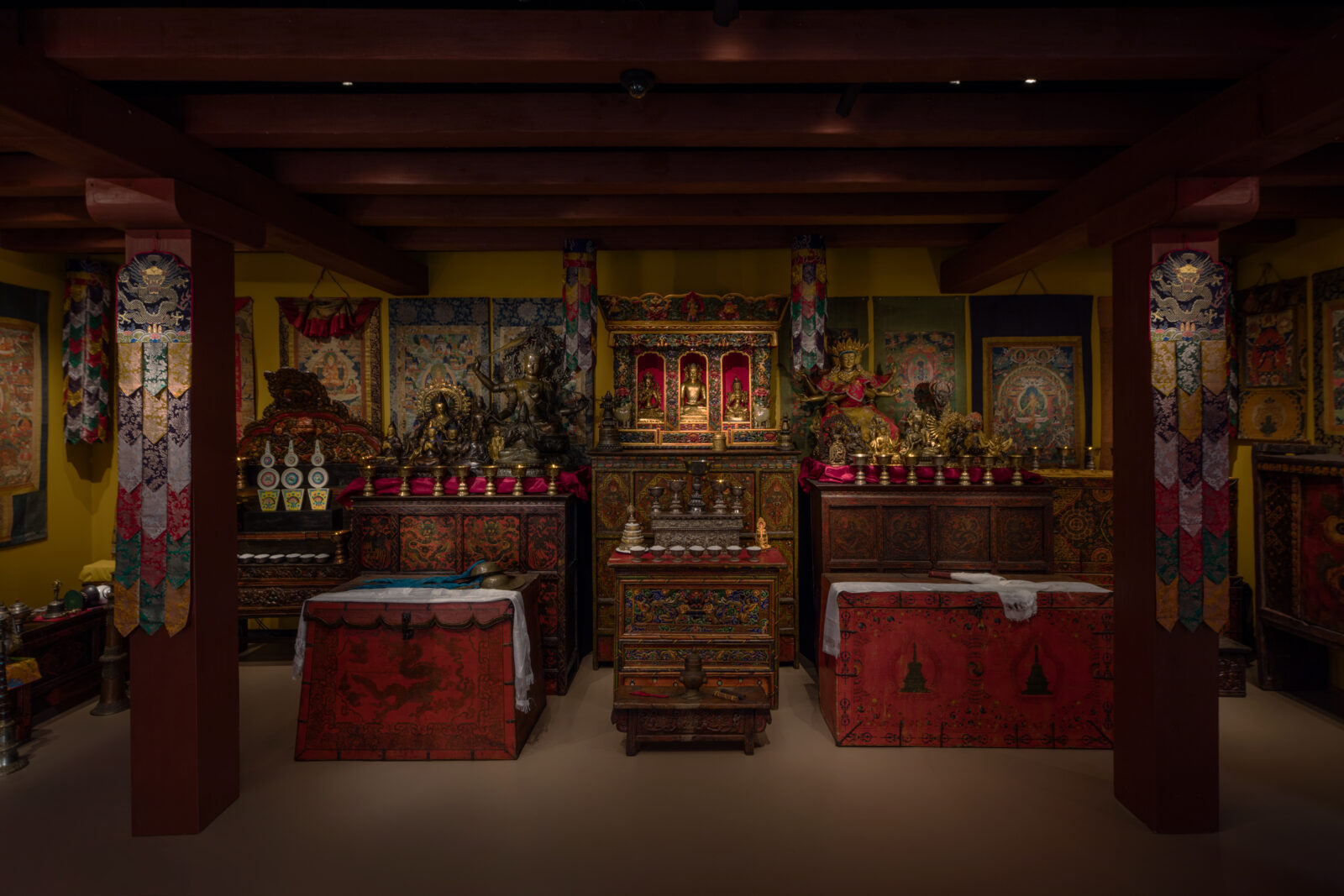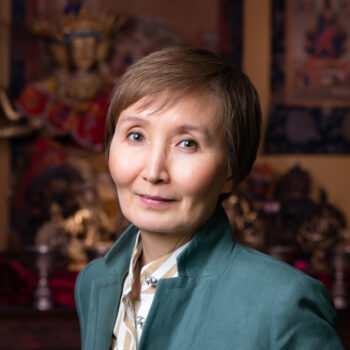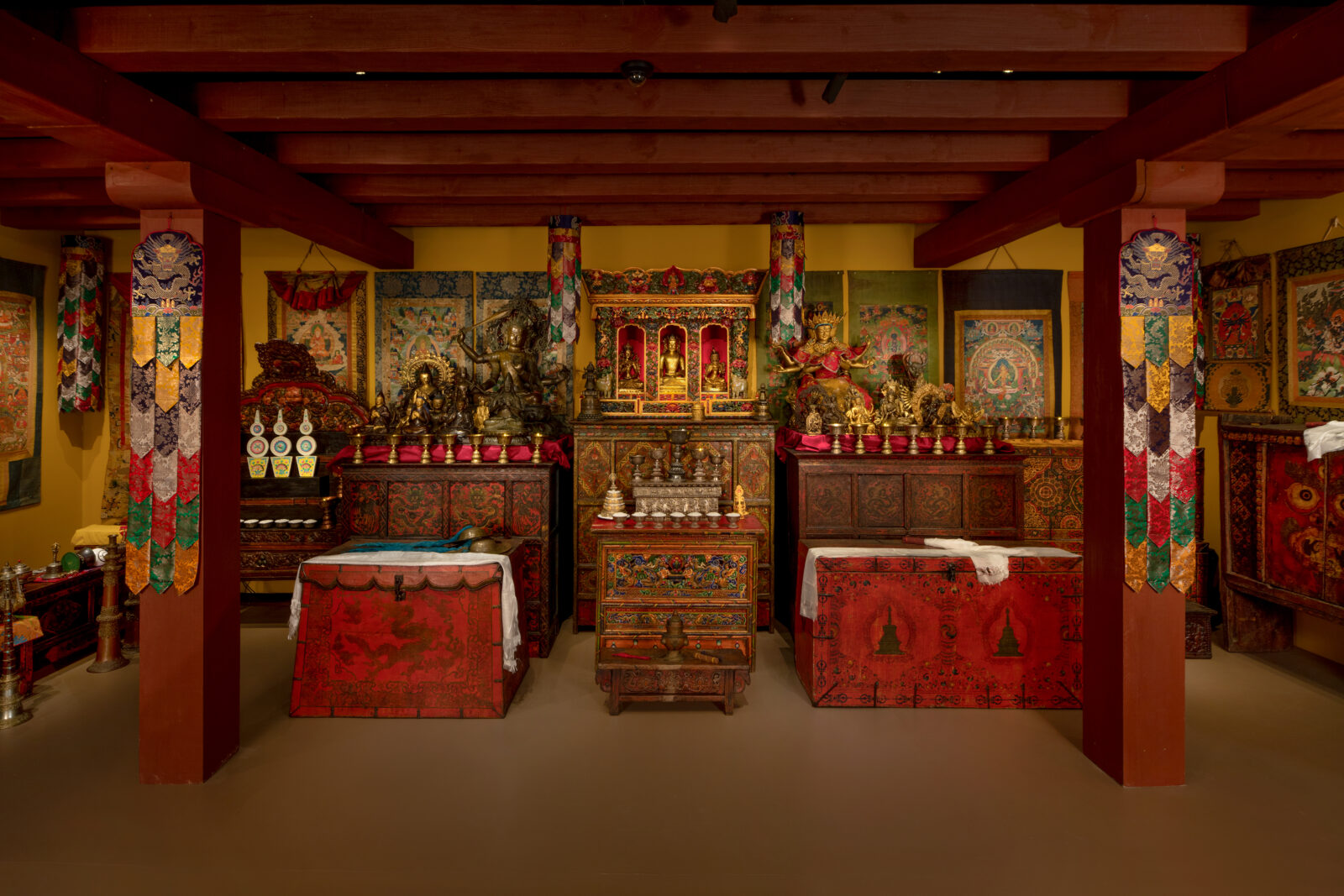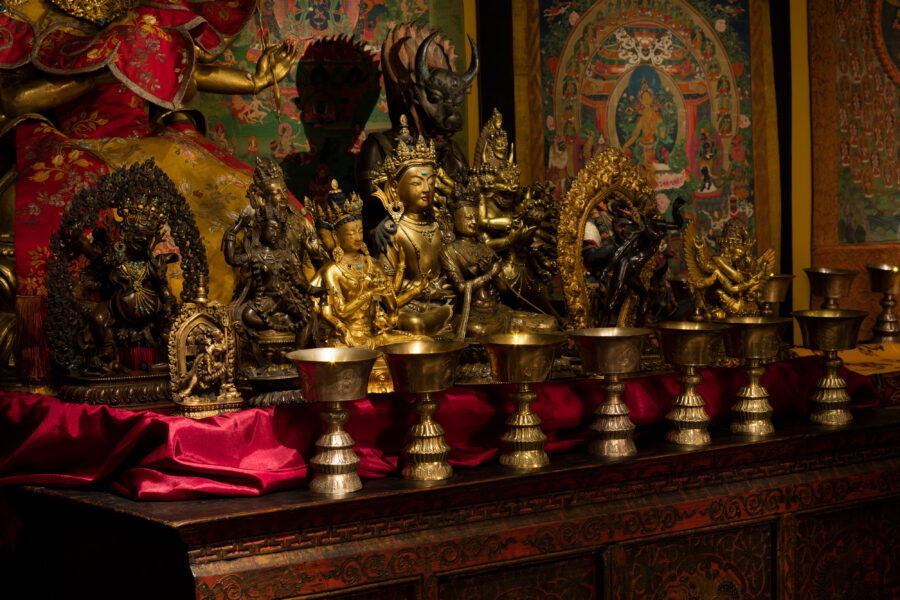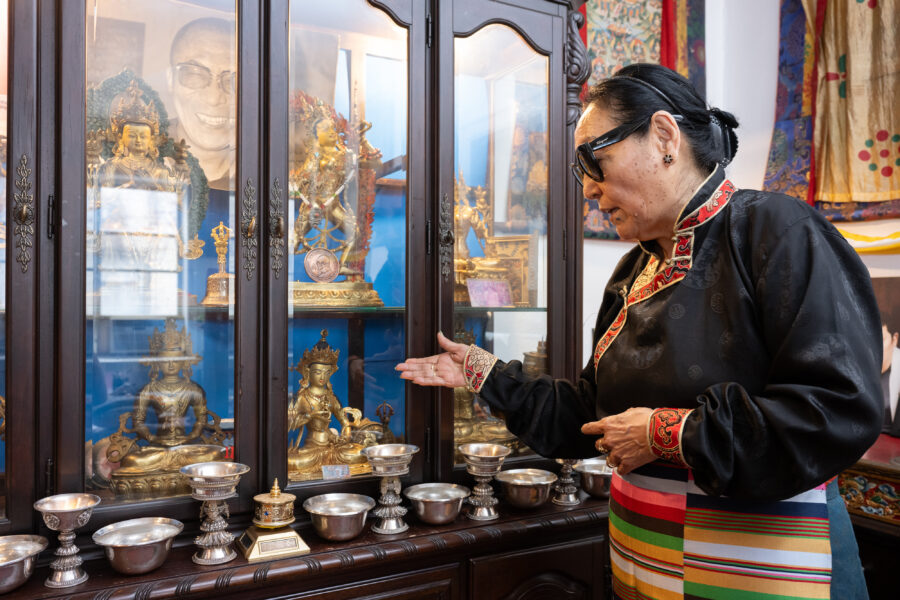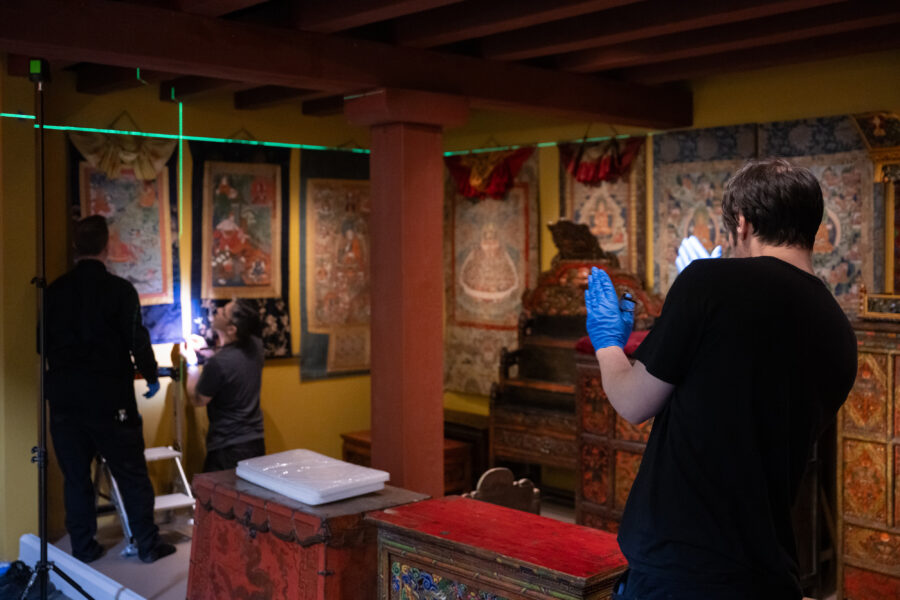The Rubin Museum Tibetan Buddhist Shrine Room presents more than 100 artworks and ritual objects as they would be displayed in an elaborate Tibetan Buddhist household shrine—a space used for devotional prayer, offerings, and rituals. Scroll paintings (thangkas), sculptures, ritual implements, and musical instruments dating from the 12th to 21st century are arranged on traditional Tibetan furniture according to their use in Tibetan Buddhist practices. Chanted prayers by monks and nuns, flickering butter lamps, and the subtle smell of incense reflect the cultural practices and remind visitors that Buddhist rituals engage all of the senses. The design incorporates elements of Tibetan architecture and the color schemes of traditional Tibetan homes, offering visitors the opportunity to experience Tibetan religious art in its cultural context.
The Shrine Room is accessible with pay-what-you-can general admission tickets purchased at the Brooklyn Museum admissions desk. The installation is located in the Arts of Asia galleries on the second floor of the museum.
Plan a visit
More than one million people experienced the Shrine Room when it was exhibited in its original location at the Rubin in Manhattan from 2013 to 2024. After the closure of the Museum’s galleries and in a commitment to ensure continued access to the Rubin’s collection of Himalayan art in New York City, the Shrine Room now has a new home at the Brooklyn Museum as part of a six-year collaboration between the two institutions.
Take an up-close look at the former Shrine Room
The contents of a home shrine depend on which Tibetan Buddhist tradition the family follows. The four main traditions are Nyingma, Sakya, Kagyu, and Geluk, and each has their own distinguishing iconography. The objects and images in a shrine room reflect the particular lineage transmissions of teachings and practices of the followed tradition.
The Rubin’s current Shrine Room installation at the Brooklyn Museum follows the Geluk Tibetan Buddhist tradition and includes scroll paintings (thangkas), sculptures, furniture, ritual implements, and musical instruments dating from the 12th to 21st century. Explore a select group of objects and their significance in the Geluk tradition and devotional use in the below art interactive.
Tibetan Buddhist shrine rooms can be found all across the greater Himalayan region, as well as in diaspora and Buddhist communities around the world. Ranging from humble household shrines to ornate temples, these spaces are centers for devotional prayers, offerings, and rituals.
Buddhist practitioners utilize shrine rooms as part of daily practice. Engaging in these activities fulfills their aspirations for well-being and reminds them of Buddhist concepts of cause and effect and impermanence and ideals of awakening or enlightenment.
Read more about shrine rooms
The Rubin Museum Tibetan Buddhist Shrine Room is supported by Anne and Albert Chao and by generous donations from the Museum’s Board of Trustees, individual donors, and Friends of the Rubin.
The Rubin Museum Tibetan Buddhist Shrine Room is supported, in part, by public funds from the New York City Department of Cultural Affairs in partnership with the City Council.
